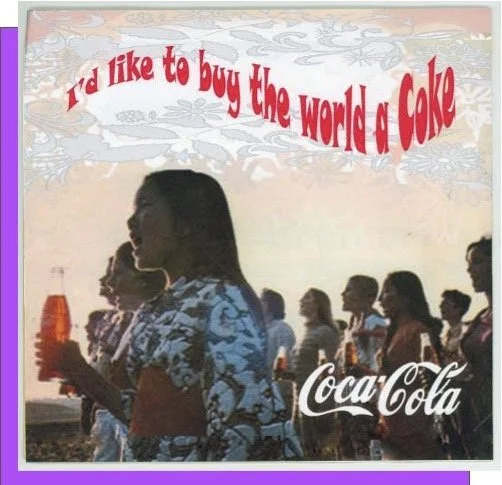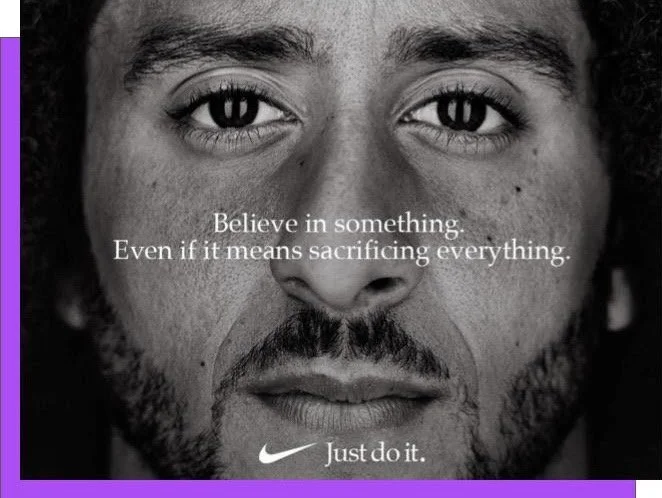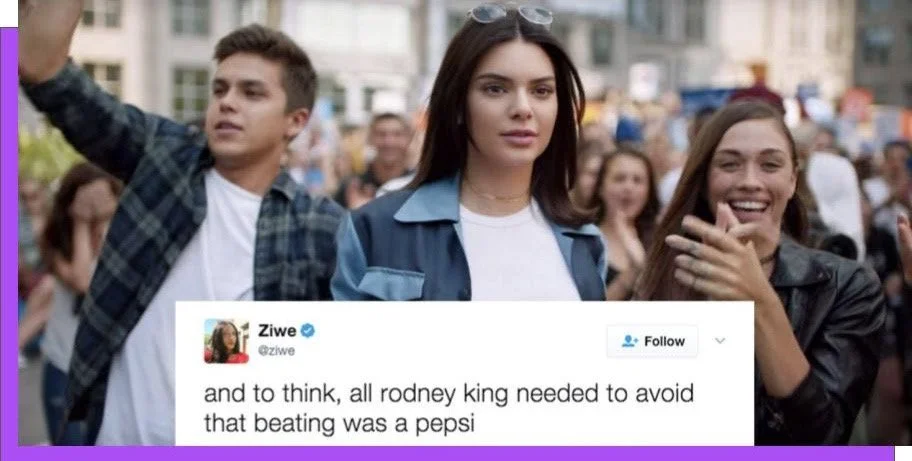February 20, 2021
We take you from being informed of what's going on in the world to being involved in making it better.
Happy weekend, team. Ready to walk with us down memory lane?
Picture this: It’s the first Sunday of February. Your buddy’s apartment is packed, sweat is building under your polyester jersey, bean dip is caked under your fingernails, and you’re standing in the bathtub ready to shotgun a warm Coors Light that never made it to the fridge. Before you hear that mouth-watering snap and inhale 12 ounces of alcoholic yeast with one head-tilt, someone abruptly stops you to yell, "IT’S TIME."
The commercials are on.
Most years, this is the Super Bowl Sunday ritual for a huge portion of America. The one day a year when more pizza-delivery drivers are on call than there are screaming girls at a Harry Styles concert and when 30 seconds of air time costs companies a mind-boggling $5.2 million. That’s because, on these particular Sundays, 100 million people tune in—nearly half of all American adults—and while you may not know the difference between a first down and a sack, you know for damn sure that SB commercials are culture in real-time.
As we reflect on the past year and the rise in conversations on race, gender, and class equality, we notice something else: the more prominent social-justice issues become in society, the more they’re reflected through brand advertisements.
That’s why, this year, we’re pregaming what we expect to be a Super Bowl filled with movement marketing by digging into why these ads move us, and highlighting The Social Justice Advertising Hall of Fame—and Infamy.
Down the Rabble Hole: Selling Social Justice
Brands have been tackling unity and justice in Super Bowl ads for longer than most of us have been alive. Back in 1971, Coca-Cola released its legendary commercial, "I’d Like to Buy the World a Coke," featuring people from all over the world singing about living in harmony. Back when those homies were singing about soda, the average American only—and we use "only" lightly—saw 500 ads a day. Today, between internet surfing and social media, along with traditional billboards and TV, it’s closer to 5,000. And with social justice at the forefront of culture, brands increasingly see the opportunity to make statements with their messaging.
Love them or hate them, ads dealing with hot-button issues like equality and equity will always turn heads. That’s because 31% of emotion-based ads perform well compared to just 16% of rational ads (say, a car commercial mentioning increased gas mileage and higher horsepower). This means the key to our attention is emotion. The more an ad stabs you in the feels, the more successful it will be. Whether or not brands get this messaging right, however, is much more complex. For movement marketing to work, consumers need to feel like a brand is being authentic and that the company is genuinely committed to the cause, not just capitalizing off of it. In the past few years, we’ve seen ads that either move us to tears or send us into a Twitter rant.
Fuzzy on the details? We’ve got the most legendary hits and misses.
Let’s run it back to 2018 when Nike gave Colin Kaepernick the props he deserved in the 30th-anniversary edition of their Just Do It campaign. As Fast Company put it, "People loved it. People hated it. People bought Nikes. People burned Nikes. People talked about it at home, at work, on the news. Everywhere." The point? It made people feel something. What could have been a one-off, attention-grabber spot turned into more when, in the wake of George Floyd’s death, the company told its fans, don’t do it: "Don’t pretend there’s not a problem in America."
Soon other brands jumped into the conversation. Apple recently dropped its "Behind the Mac" campaign as a tribute to all of the public figures fighting for justice this year. Beats released a moving ad with Naomi Osaka after she wore controversial protest masks at the US Open with the message "Silence is violence." Hitting the appropriate tone is an art, of course—Beats also released an ad showing Flo Milli dancing in front of a Confederate statue that was instantly panned and almost as far off the mark as Kendall Jenner’s infamous Pepsi ad. Apparently, no one believes that the world’s problems will be solved with soda just like no one thinks dancing in front of a Confederate statue will erase its racist history.
While some companies struggle to find an authentic voice in the social justice conversation, this weekend, it’s the brands staying silent who are speaking loudest. The typical Super Bowl MVPs—Budweiser, Pepsi, Coke—are taking the bench to put their ad dollars toward vaccine awareness marketing.
And sure, for companies, success is measured in brand loyalty and sales; you could argue a slam-dunk Nike equality ad is actually about selling more Dunks. But if these brands are using their money and their platform to promote social justice, do their "true motivations" really matter? Even if Budweiser is opting out of the Super Bowl of marketing just to make headlines, they’re still helping the country get one step closer to a widely distributed vaccine. Even if Beats is covering racial justice in its ads just to peddle more headphones, they’re still making us think about the impact of our voice and the best way to use it.
Yes, to be deemed successful by marketers, a movement ad must actually move us when we watch. But we don’t think it’s pollyannaish to say that the true measure of any social justice ad’s success is its ability to influence and change culture for the better. So tomorrow, when you’re one of the 100 million sets of eyes on that football game, think about the way you want society to look, and notice the brands running ads that already visualize it.
— By Sabrina Hunt



